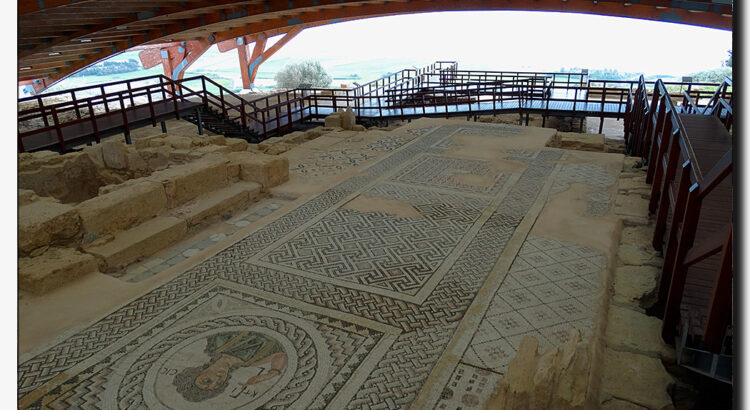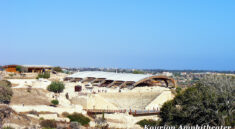Eustolios dedicated his home and the public baths he built for Kourion to Christ. This mosaic inscription is at the main entrance:

has Now Girt Itself with the much Venerated Signs of Christ.”
Early Christians used symbols to carry specific meanings used in showing their beliefs, communicating among themselves, and marking locations.
Some symbols used by them are still used today; the cross is the perfect example. Other early symbols are meaningless to Christians today, who can only guess at what they might have meant.
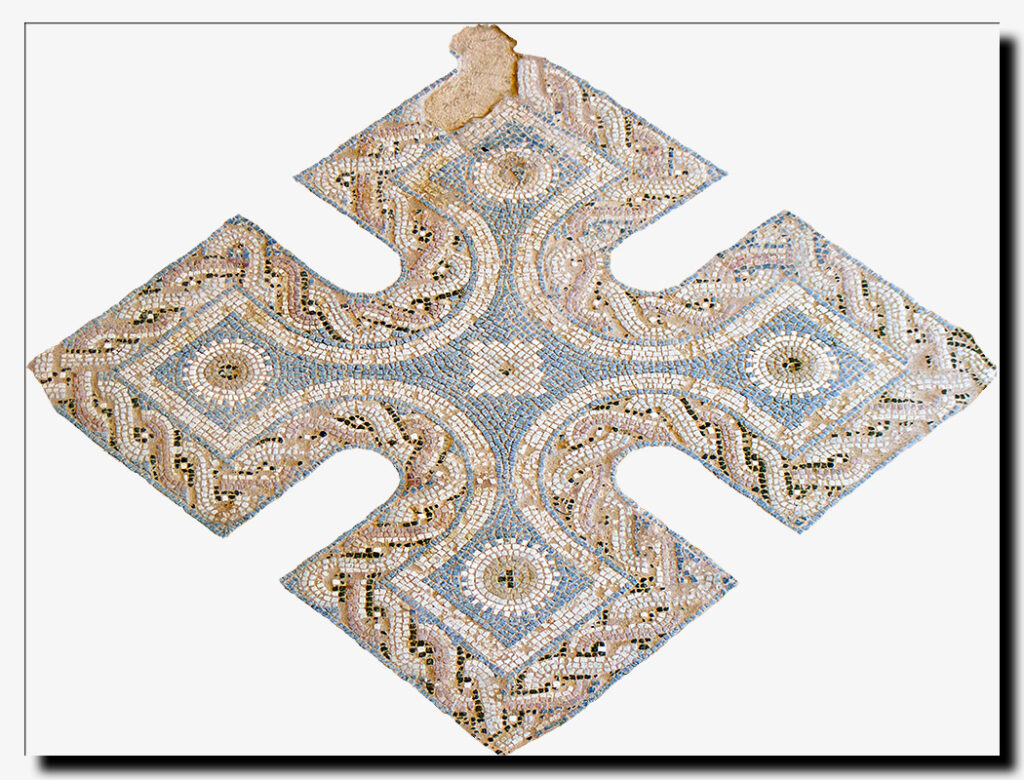
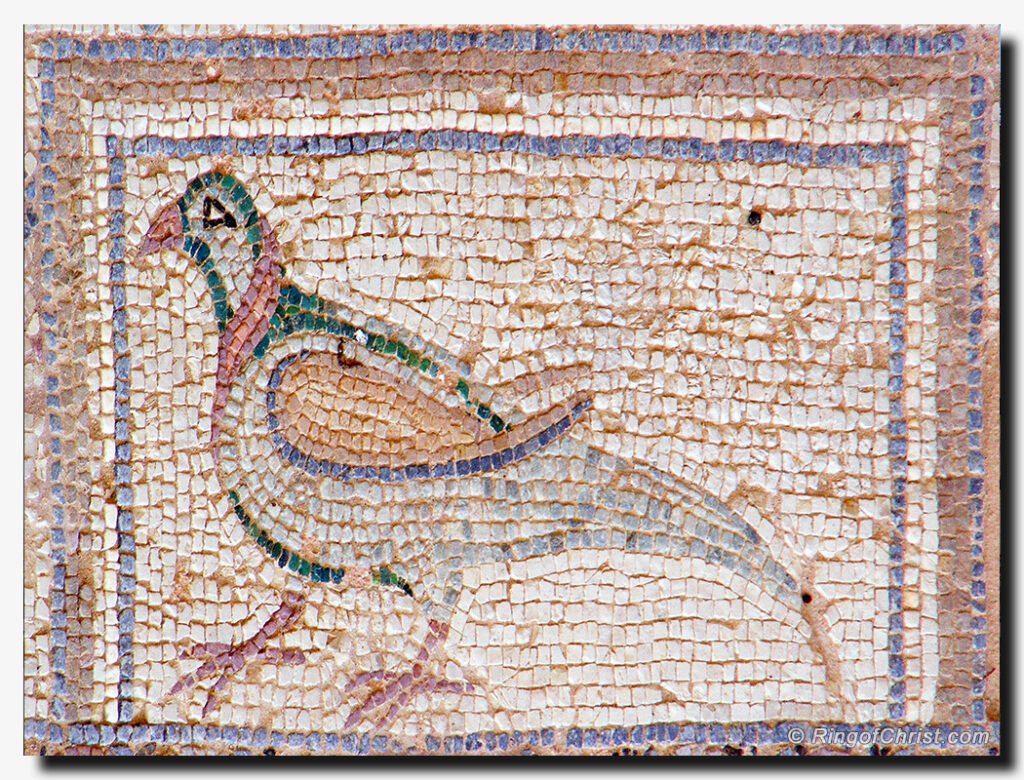
The Main Christian Mosaic in the House of Eustolios
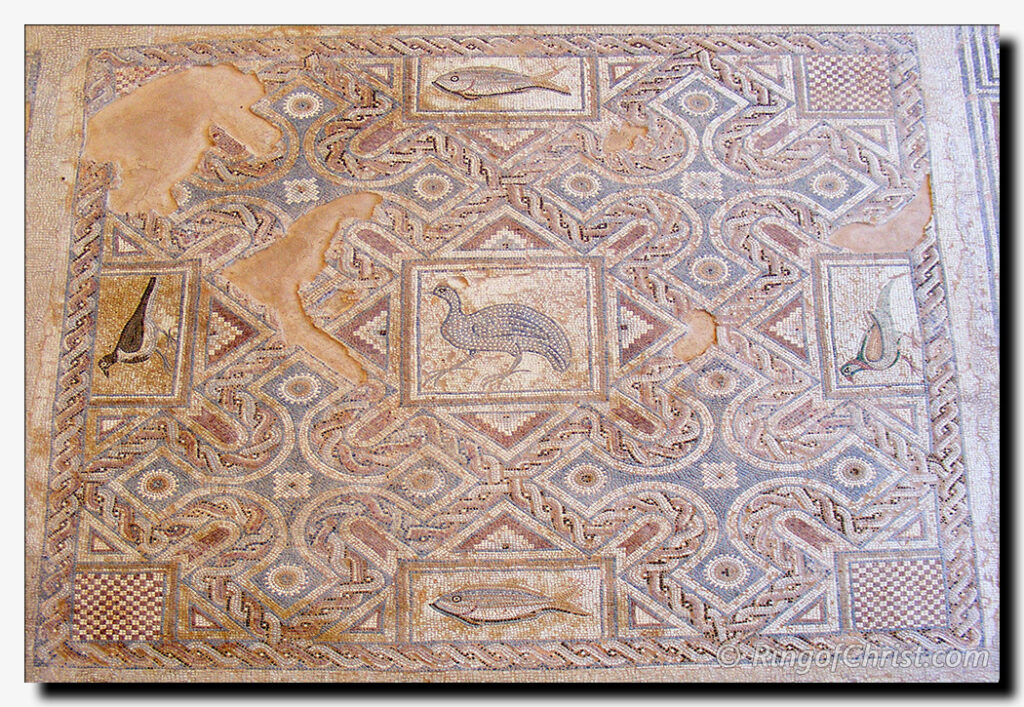
A Guinea Fowl is the most prominent animal symbol of this central mosaic in the House of Eustolios. Guinea fowl are excellent guards and warn of danger, monogamous, quick to protect their young, and live in flocks.
As the main Christian mosaic’s centerpiece, the Guinea Hen was obviously an important symbol to early Christians, but no one is quite sure what it represented. Perhaps the symbol means a person with steadfast Christian values and defender of the Faith.
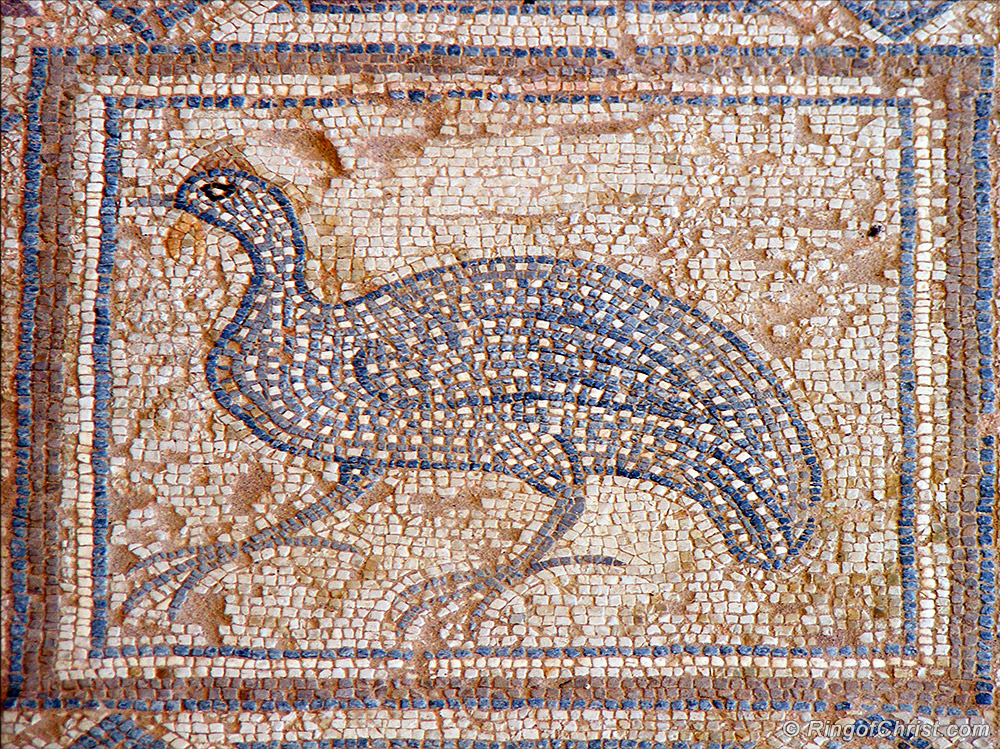
“Come, follow me,” Jesus said, “and I will send you out to fish for people.” At once they left their nets and followed him. …[Matt4:19-20]
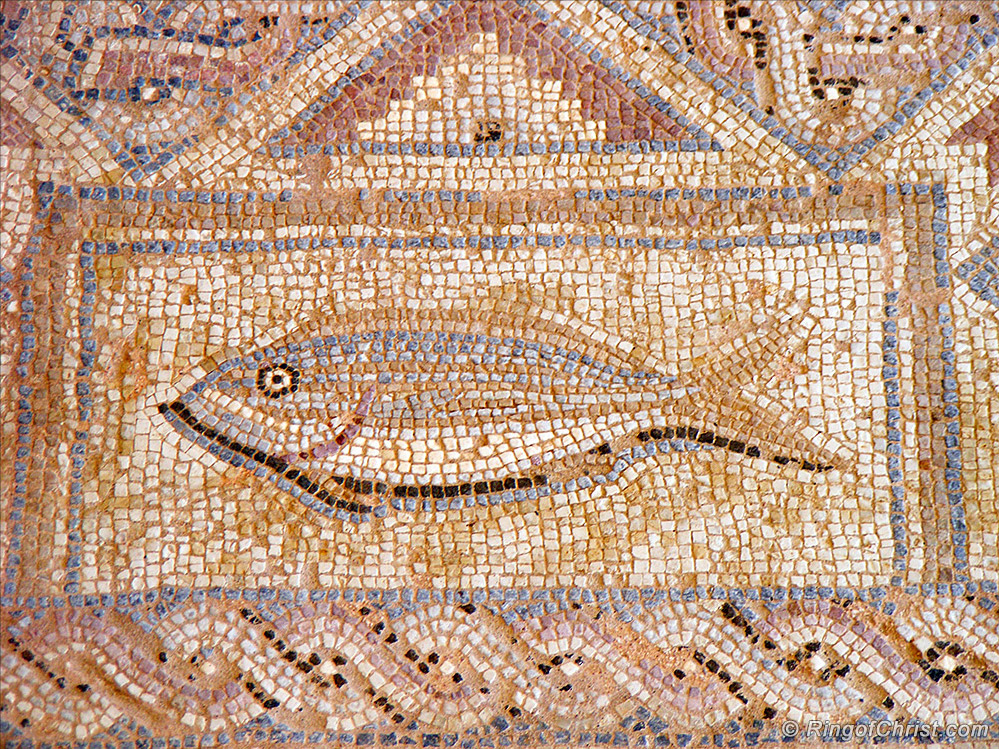
Each letter of the Greek word ICHTUS represents: Jesus, Christ, Lord, Son, Saviour.
The mosaic of Ktisis below is found on the floor of the frigidarium in the House of Eustolios. She is the personification of ‘Creation,’ and the only example in Cyprus of this 4th to 6th Century decorative trend. She holds a measuring device, the Roman foot.
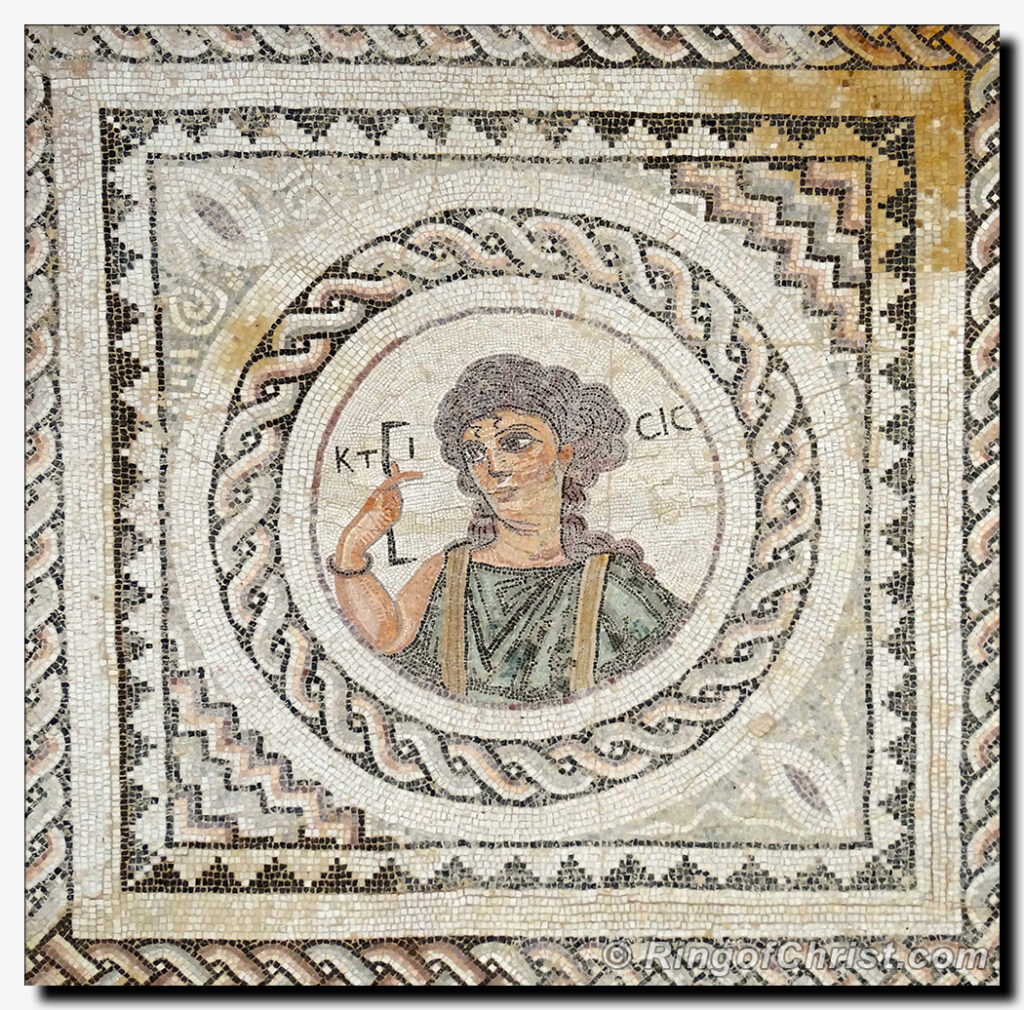
Ktisis belongs to a similar family of personifications such as “Power,” “Renewal,” and “Manliness” which were very popular throughout the eastern Mediterranean especially in Antioch.
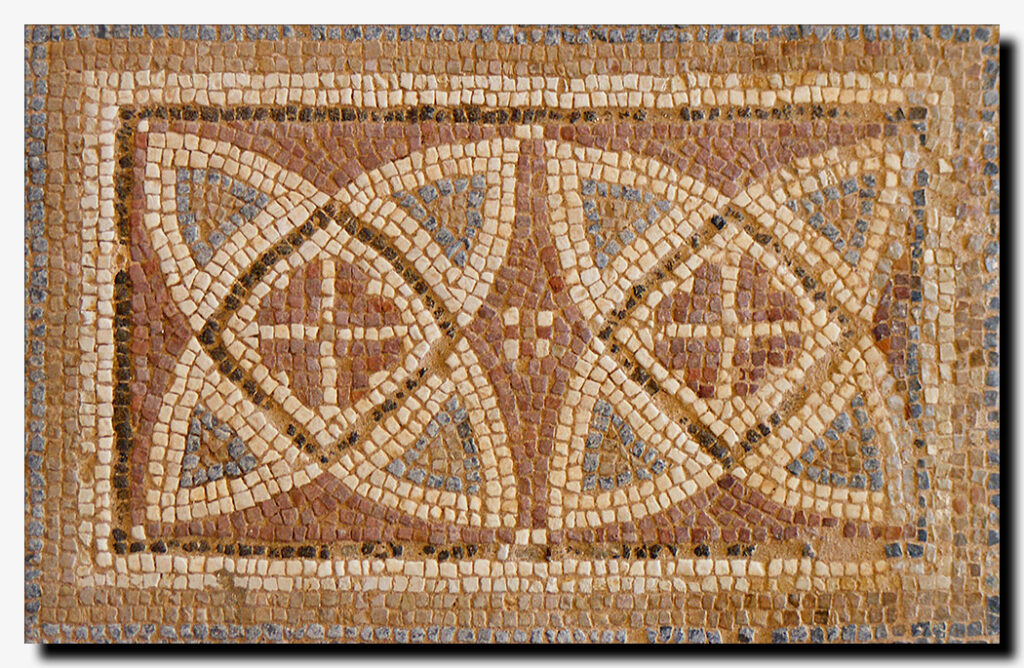
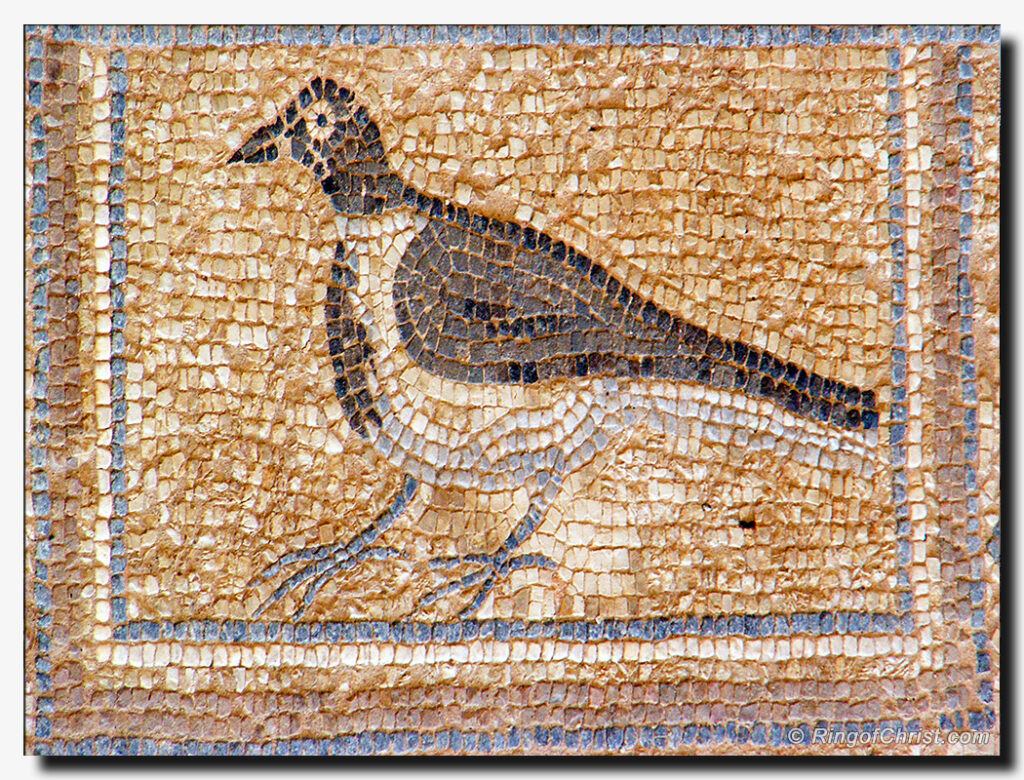
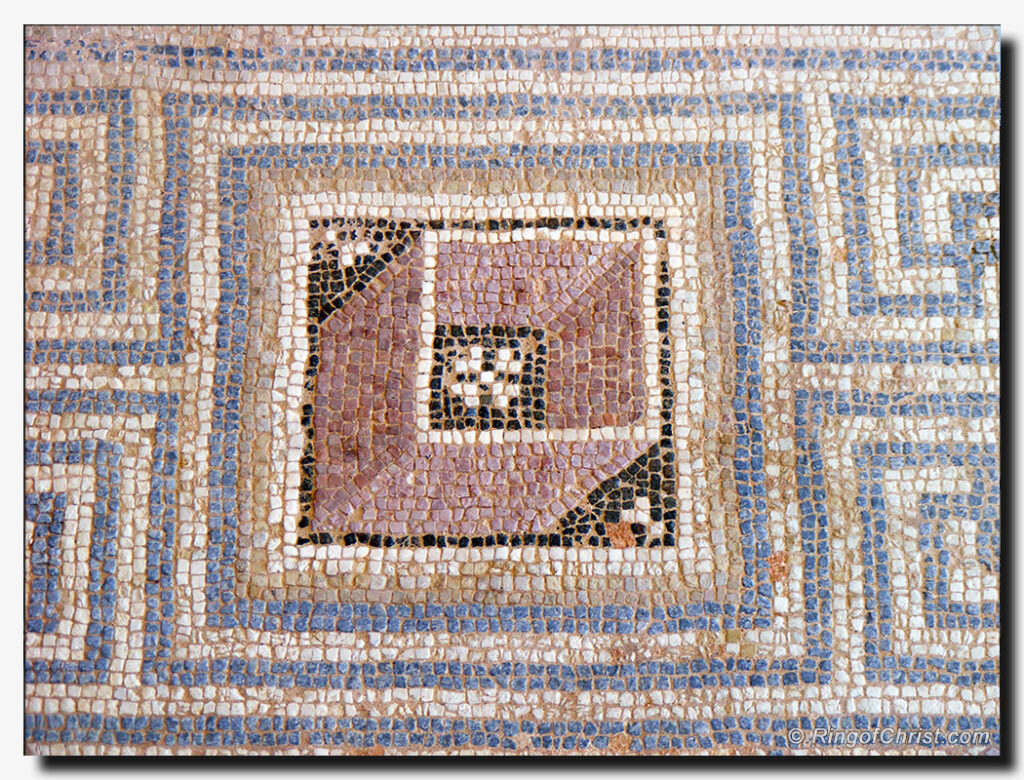
Throughout the House of Eustolios can be found a multitude of beautiful mosaics, and even today it is easy to imagine how spacious, airy and above all lavish this public building must have been during its use.
